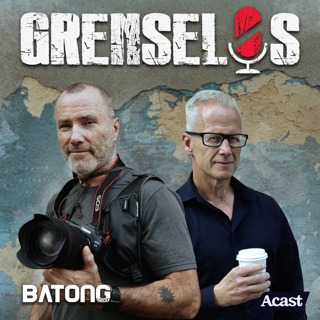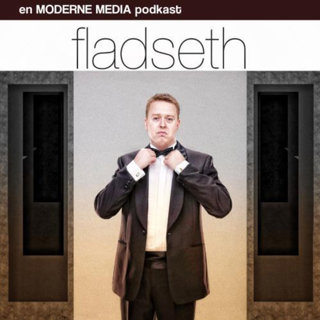
The invention of superglue
In 1951, American chemist Dr Harry Coover was experimenting with a substance called cyanoacrylate but it was sticking to everything.He realised its potential as an adhesive and it went on sale in 1958 as Eastman 910, because it only took 10 seconds to set.But his product only became a commercial success after an appearance on a game show, I've Got a Secret, where Harry demonstrated his glue could hold the weight of the presenter.Rachel Naylor speaks to Harry's grandson, Adam Paul.Eye-witness accounts brought to life by archive. Witness History is for those fascinated by the past. We take you to the events that have shaped our world through the eyes of the people who were there. For nine minutes every day, we take you back in time and all over the world, to examine wars, coups, scientific discoveries, cultural moments and much more. Recent episodes explore everything from football in Brazil, the history of the ‘Indian Titanic’ and the invention of air fryers, to Public Enemy’s Fight The Power, subway art and the political crisis in Georgia. We look at the lives of some of the most famous leaders, artists, scientists and personalities in history, including: visionary architect Antoni Gaudi and the design of the Sagrada Familia; Michael Jordan and his bespoke Nike trainers; Princess Diana at the Taj Mahal; and Görel Hanser, manager of legendary Swedish pop band Abba on the influence they’ve had on the music industry. You can learn all about fascinating and surprising stories, such as the time an Iraqi journalist hurled his shoes at the President of the United States in protest of America’s occupation of Iraq; the creation of the Hollywood commercial that changed advertising forever; and the ascent of the first Aboriginal MP.(Photo: Dr Harry Coover holds up items stuck together with superglue in 1986. Credit: AP / Fred Jewell)
1 Apr 10min

The 'ghost town' of Namibia
In the early 1900s, the first diamond was found in Kolmanskop, in the African country of Namibia. It led to a diamond rush and the town was created.Having become one of the wealthiest places, when the diamonds ran out it was abandoned.It meant this once vibrant place started being buried by the Namib Desert.Dieter Huyssen speaks to Megan Jones about his memories of visiting the town, which is where his family once called home.Eye-witness accounts brought to life by archive. Witness History is for those fascinated by the past. We take you to the events that have shaped our world through the eyes of the people who were there. For nine minutes every day, we take you back in time and all over the world, to examine wars, coups, scientific discoveries, cultural moments and much more. Recent episodes explore everything from football in Brazil, the history of the ‘Indian Titanic’ and the invention of air fryers, to Public Enemy’s Fight The Power, subway art and the political crisis in Georgia. We look at the lives of some of the most famous leaders, artists, scientists and personalities in history, including: visionary architect Antoni Gaudi and the design of the Sagrada Familia; Michael Jordan and his bespoke Nike trainers; Princess Diana at the Taj Mahal; and Görel Hanser, manager of legendary Swedish pop band Abba on the influence they’ve had on the music industry. You can learn all about fascinating and surprising stories, such as the time an Iraqi journalist hurled his shoes at the President of the United States in protest of America’s occupation of Iraq; the creation of the Hollywood commercial that changed advertising forever; and the ascent of the first Aboriginal MP.(Photo: Dieter's father's house. Credit: Dieter Huyssen)
31 Mar 9min

The father of Ethio-Jazz
For more than 50 years, Mulatu Astatke has been performing at venues around the world, inspiring audiences with his original genre of music known as Ethio-jazz.He recorded the volumes of ‘Afro-Latin Soul’ with his band, The Ethiopian Quintet, in 1966. They were the first experiments of this new sound, fusing Ethiopian traditional notes with Afro Latin and jazz forms. Mulatu Astatke tells Vicky Carter how he created the genre of Ethio-jazz. Eye-witness accounts brought to life by archive. Witness History is for those fascinated by the past. We take you to the events that have shaped our world through the eyes of the people who were there. For nine minutes every day, we take you back in time and all over the world, to examine wars, coups, scientific discoveries, cultural moments and much more. Recent episodes explore everything from football in Brazil, the history of the ‘Indian Titanic’ and the invention of air fryers, to Public Enemy’s Fight The Power, subway art and the political crisis in Georgia. We look at the lives of some of the most famous leaders, artists, scientists and personalities in history, including: visionary architect Antoni Gaudi and the design of the Sagrada Familia; Michael Jordan and his bespoke Nike trainers; Princess Diana at the Taj Mahal; and Görel Hanser, manager of legendary Swedish pop band Abba on the influence they’ve had on the music industry. You can learn all about fascinating and surprising stories, such as the time an Iraqi journalist hurled his shoes at the President of the United States in protest of America’s occupation of Iraq; the creation of the Hollywood commercial that changed advertising forever; and the ascent of the first Aboriginal MP.(Photo: Mulatu Astatke. Credit: BBC)
28 Mar 9min

Harold Riley’s 'one of a kind' portrait of Nelson Mandela
Harold Riley was the only artist in the world granted a sitting to capture Nelson Mandela on canvas. The unique portrait was unveiled in 2005 and raised over $1m for South African children's charities at an auction held at the Rockefeller Centre in New York. Mandela sat for the English artist six times in Cape Town and Johannesburg over 18 months which Harold Riley described as "one of the greatest experiences" of his life.This programme was produced and presented by Reena Stanton-Sharma using archive. Eye-witness accounts brought to life by archive. Witness History is for those fascinated by the past. We take you to the events that have shaped our world through the eyes of the people who were there. For nine minutes every day, we take you back in time and all over the world, to examine wars, coups, scientific discoveries, cultural moments and much more. Recent episodes explore everything from football in Brazil, the history of the ‘Indian Titanic’ and the invention of air fryers, to Public Enemy’s Fight The Power, subway art and the political crisis in Georgia. We look at the lives of some of the most famous leaders, artists, scientists and personalities in history, including: visionary architect Antoni Gaudi and the design of the Sagrada Familia; Michael Jordan and his bespoke Nike trainers; Princess Diana at the Taj Mahal; and Görel Hanser, manager of legendary Swedish pop band Abba on the influence they’ve had on the music industry. You can learn all about fascinating and surprising stories, such as the time an Iraqi journalist hurled his shoes at the President of the United States in protest of America’s occupation of Iraq; the creation of the Hollywood commercial that changed advertising forever; and the ascent of the first Aboriginal MP.(Photo: Harold Riley's portrait of Nelson Mandela. Credit: Stephen Lovekin/WireImage for AOL Time Warner - Corporate Communications)
27 Mar 10min

The suspicious death of Rear Admiral Durović
As Yugoslavia began to break down, the Balkans conflict began - a series of brutal wars characterised by disputes over territory, identity, and ethnic divisions. In 1991, the Croatian War of Independence started – the first of the major wars. One of its defining moments came in October, when the Yugoslav People’s Army advanced on the south of the country leading to the Siege of Dubrovnik. One of the Yugoslav People’s Army commanders in the region was Rear Admiral Krsto Durović, a Montenegrin who had spent his life working in Croatia, married a Croatian and planned to retire to the country. Attacking Dubrovnik was unthinkable for the Rear Admiral, and he promised the city’s major: “As long as I am the commander, not a single shell will fall on Dubrovnik."Shortly afterwards he was killed in a suspicious helicopter crash – his superiors claimed he was shot down, but there were no opposition forces in the area, and Croatian officials denied any part in the crash. There was never an autopsy and no military investigation. Soon after, Miodrag Jokic was appointed Durović’s replacement, and a vicious bombing campaign began which would later see Jokic convicted of war crimes. Johnny I’Anson speaks to Montenegrin journalist Veseljko Koprivica, and documentary maker Mladen Ivanovic who say Rear Admiral Đurović’s refusal to bomb Dubrovnik may have led to his untimely death. Eye-witness accounts brought to life by archive. Witness History is for those fascinated by the past. We take you to the events that have shaped our world through the eyes of the people who were there. For nine minutes every day, we take you back in time and all over the world, to examine wars, coups, scientific discoveries, cultural moments and much more. Recent episodes explore everything from football in Brazil, the history of the ‘Indian Titanic’ and the invention of air fryers, to Public Enemy’s Fight The Power, subway art and the political crisis in Georgia. We look at the lives of some of the most famous leaders, artists, scientists and personalities in history, including: visionary architect Antoni Gaudi and the design of the Sagrada Familia; Michael Jordan and his bespoke Nike trainers; Princess Diana at the Taj Mahal; and Görel Hanser, manager of legendary Swedish pop band Abba on the influence they’ve had on the music industry. You can learn all about fascinating and surprising stories, such as the time an Iraqi journalist hurled his shoes at the President of the United States in protest of America’s occupation of Iraq; the creation of the Hollywood commercial that changed advertising forever; and the ascent of the first Aboriginal MP.(Photo: Rear Admiral Durović. Credit: Durović family)
26 Mar 9min

Goodluck Jonathan’s phone call that changed Nigeria
In 2015 Goodluck Jonathan became the first Nigerian president to concede election defeat. It allowed the transfer of power to the opposition party in Africa's biggest democracy - a country that had hitherto experienced vote-rigging and violence. His special adviser on media and publicity Dr Reuben Abati tells Josephine McDermott about the moment when the president phoned his opponent Muhammadu Bahari to congratulate him on winning the election.Eye-witness accounts brought to life by archive. Witness History is for those fascinated by the past. We take you to the events that have shaped our world through the eyes of the people who were there. For nine minutes every day, we take you back in time and all over the world, to examine wars, coups, scientific discoveries, cultural moments and much more.Recent episodes explore everything from football in Brazil, the history of the ‘Indian Titanic’ and the invention of air fryers, to Public Enemy’s Fight The Power, subway art and the political crisis in Georgia. We look at the lives of some of the most famous leaders, artists, scientists and personalities in history, including: visionary architect Antoni Gaudi and the design of the Sagrada Familia; Michael Jordan and his bespoke Nike trainers; Princess Diana at the Taj Mahal; and Görel Hanser, manager of legendary Swedish pop band Abba on the influence they’ve had on the music industry. You can learn all about fascinating and surprising stories, such as the time an Iraqi journalist hurled his shoes at the President of the United States in protest of America’s occupation of Iraq; the creation of the Hollywood commercial that changed advertising forever; and the ascent of the first Aboriginal MP.(Photo: President Goodluck Jonathan and Gen Muhammadu Buhari before the 2015 election. Credit: Getty Images)
25 Mar 10min

The Germanwings plane crash
When General David Galtier hovered above the French Alps in a helicopter on 24 March 2015 he could not see the 60-tonne plane he was looking for. Instead he saw thousands and thousands of little pieces of metal. “There was nothing,” he says. “Only these little stars shining in the mountains.”Ten years on, he recalls to Josephine McDermott how he led the police’s search operation, from the moment he heard about the disappearance of Flight 4U 9525, to the handing back of the victims’ possessions.In the first 24 hours, the possibility that such a routine, short-haul flight cruising with two experienced pilots on board could end in the loss of 150 people was almost impossible to comprehend.Then, Gen Galtier heard the cockpit voice recorder which revealed the last efforts from air traffic control to communicate with Andreas Lubitz who had locked himself in the cockpit. Investigators drew the harrowing conclusion that he had intended to crash the plane. Eye-witness accounts brought to life by archive. Witness History is for those fascinated by the past. We take you to the events that have shaped our world through the eyes of the people who were there. For nine minutes every day, we take you back in time and all over the world, to examine wars, coups, scientific discoveries, cultural moments and much more. Recent episodes explore everything from football in Brazil, the history of the ‘Indian Titanic’ and the invention of air fryers, to Public Enemy’s Fight The Power, subway art and the political crisis in Georgia. We look at the lives of some of the most famous leaders, artists, scientists and personalities in history, including: visionary architect Antoni Gaudi and the design of the Sagrada Familia; Michael Jordan and his bespoke Nike trainers; Princess Diana at the Taj Mahal; and Görel Hanser, manager of legendary Swedish pop band Abba on the influence they’ve had on the music industry. You can learn all about fascinating and surprising stories, such as the time an Iraqi journalist hurled his shoes at the President of the United States in protest of America’s occupation of Iraq; the creation of the Hollywood commercial that changed advertising forever; and the ascent of the first Aboriginal MP.(Photo: The memorial site of the Germanwings plane crash. Credit: AP)
24 Mar 10min

The visionary behind the European Space Agency
In October 2012, the founding father of the European Space Agency was honoured when a spacecraft named after him was sent to the international space station. Within the probe – called the Edoardo Amaldi Automated Transfer Vehicle – was a letter which had been written by Edoardo in 1958 detailing his plans for an organisation which would bring together the continent’s greatest minds in space science. It was in response to the brain drain Europe was facing in the years prior when its best scientists were flying off to work at NASA. His grandson, Andrea Amaldi, talks to Natasha Fernandes about the moment his grandfather’s letter was sent into space and the role he played in translating it on behalf of the visionary behind the European Space Agency.Eye-witness accounts brought to life by archive. Witness History is for those fascinated by the past. We take you to the events that have shaped our world through the eyes of the people who were there. For nine minutes every day, we take you back in time and all over the world, to examine wars, coups, scientific discoveries, cultural moments and much more. Recent episodes explore everything from football in Brazil, the history of the ‘Indian Titanic’ and the invention of air fryers, to Public Enemy’s Fight The Power, subway art and the political crisis in Georgia. We look at the lives of some of the most famous leaders, artists, scientists and personalities in history, including: visionary architect Antoni Gaudi and the design of the Sagrada Familia; Michael Jordan and his bespoke Nike trainers; Princess Diana at the Taj Mahal; and Görel Hanser, manager of legendary Swedish pop band Abba on the influence they’ve had on the music industry. You can learn all about fascinating and surprising stories, such as the time an Iraqi journalist hurled his shoes at the President of the United States in protest of America’s occupation of Iraq; the creation of the Hollywood commercial that changed advertising forever; and the ascent of the first Aboriginal MP.(Photo: ESA's ATV-3, Edoardo Amaldi, blasts off on March 23, 2012 from the European space centre at Kourou, French Guiana. Credit: JODY AMIET/AFP via Getty Images)
21 Mar 10min





















